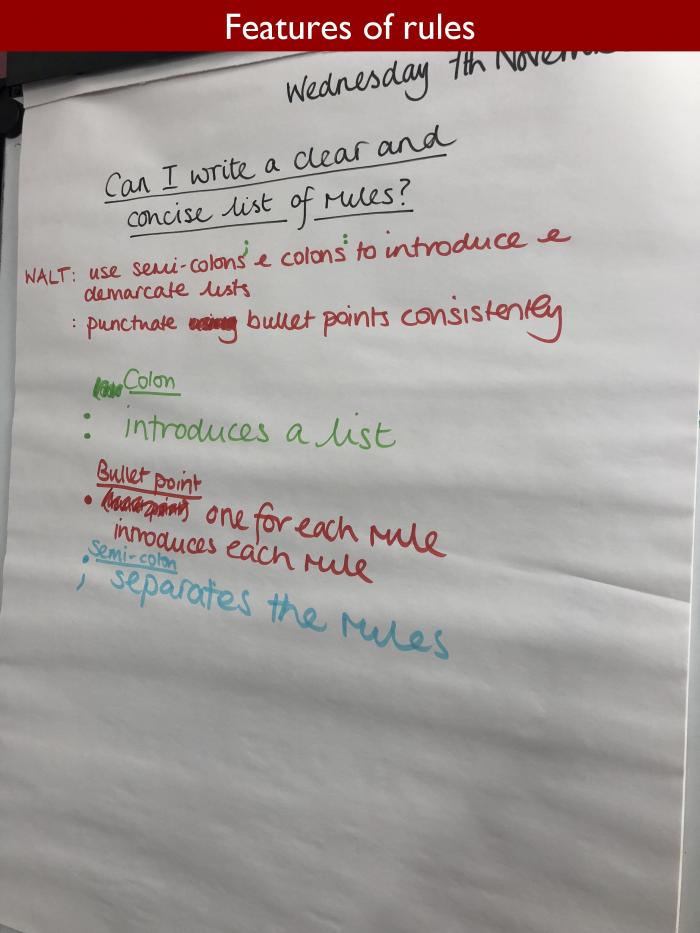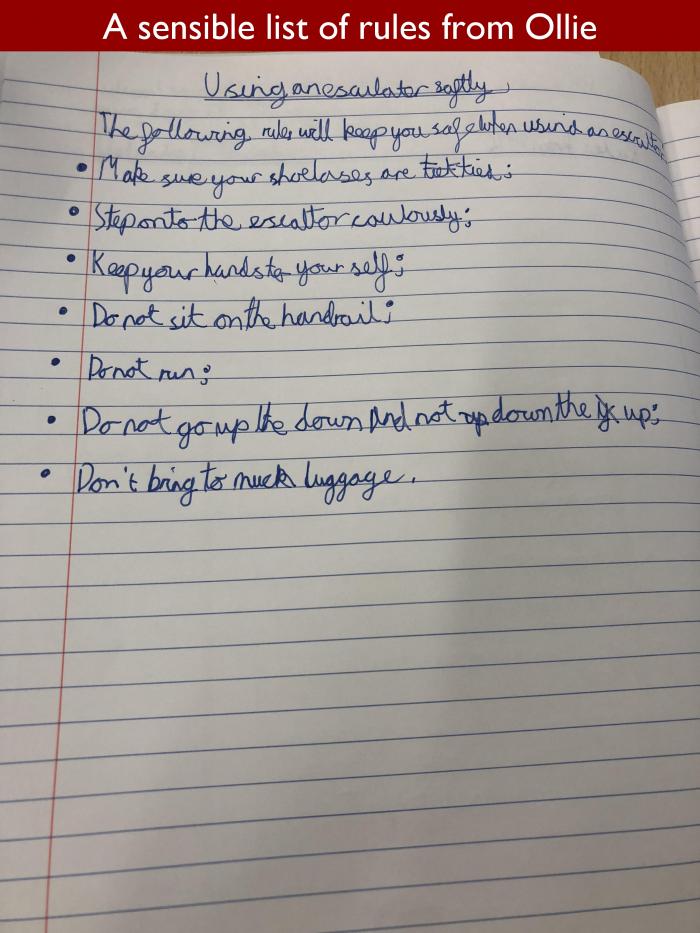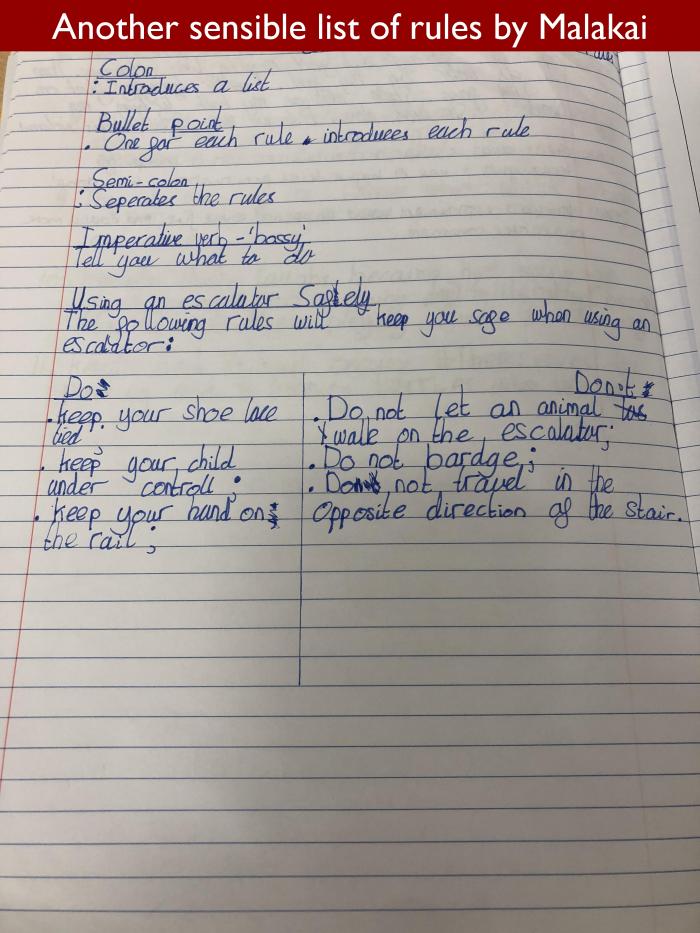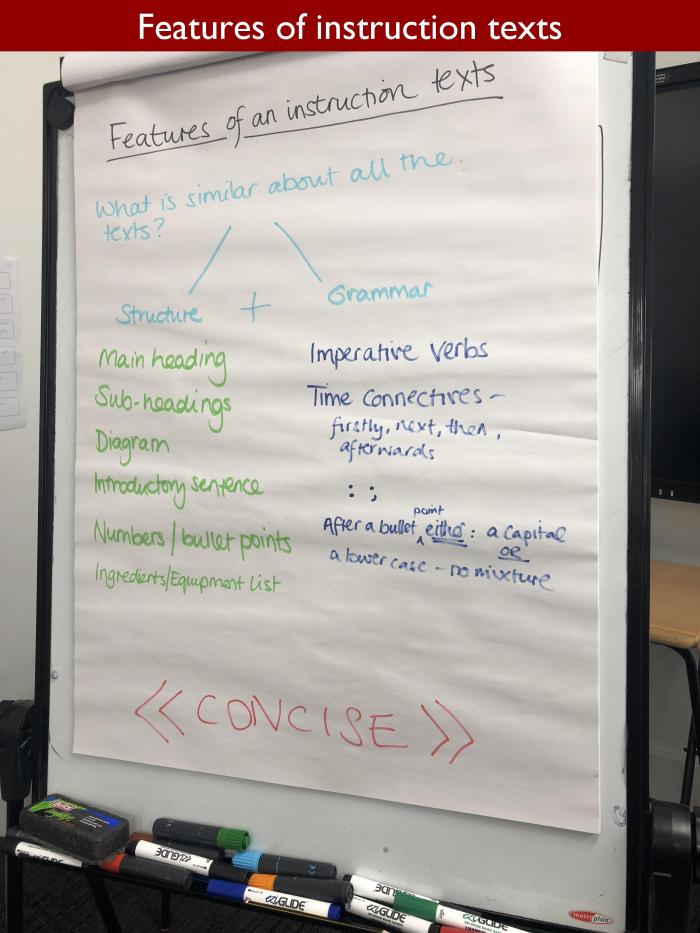














Stick To The Rules
Schools and rules go together like fish and chips or soap and water, and most people think that, in schools at least, rules just consist of a list of things you shouldn’t do. That may have been the case in the past, but in schools these days teachers prefer to turn rules into positive statements, emphasising the sort of behaviour we are seeking to encourage rather than that we are hoping to avoid. Eversfield is no exception to this, and indeed one of the first tasks of every academic year is for each form to work together with their teacher to devise a set of rules to ensure a happy, productive and safe classroom environment.
Last week, Mrs Phillips’ Form 5 English group had the chance to become rule makers themselves as they explored the technical features of rules and the related genre of instructional texts. In their first lesson, the children were given the task of producing a set of safety rules that were clear, concise and practical.
To get them thinking, Mrs Phillips showed her group an intriguing set of rules produced many years ago by London Transport for the safe boarding of a double decker bus. Once they had overcome their shock at finding that the poster was devoid of all form of punctuation, some interesting observations followed. The importance of stepping on board with the left foot first provoked considerable interest, and presumably relates to the positioning of the rail and the stairs to the upper deck. The children wondered how rules for boarding modern buses would differ, and indeed whether you would actually need any rules nowadays. Having boarded a bus recently in the centre of Solihull, I might venture to suggest that rules for polite queuing would be rather more appropriate.
The discussion led on to another potentially hazardous travel experience, that of boarding an escalator. Mrs Phillips wanted the children to devise a clear and concise set of rules for this, having first thought through all the possible things that could pose a danger. Gurnek remembered seeing someone attempting to put their hand in the gap at the bottom of an escalator, the gap in which Malakai almost lost his shoelace. Would the same rules apply, I wonder, for up as well as down escalators, given that, for me at least, down escalators are ten times more scary to board?
Before they started writing, Mrs Phillips reminded the children again that the rules had to be brief and to the point. People don’t have time to stop and read when approaching an escalator in the middle of a crowd. Unlike London Transport, everyone in Form 5 took care to remember the correct punctuation in their writing – a colon after their introductory sentence, followed by bullet points and a semi colon at the end of each point. The rules should be finished with a full stop. As you would when writing instructions, it is necessary to use the imperative form of the verb.
Following on from this work, in the next lesson Mrs Phillips showed her class a range of instructional texts. These ranged from advice on how to groom your dog and save money to how to perform an obscure dance known as the Hitch Hiker. Having studied all the examples, the children were told to come up with a comprehensive list of the structural and grammatical features of instructions. Mrs Phillips was adamant that the list should be concise with absolutely no waffle. Not only did this task provide the children with the opportunity to work collaboratively, but it also focused on developing their critical faculties. Some sets of instructions, they discovered, were definitely better than others. Daniel and Caiden, for instance, were highly critical of the instructions provided to do the Hitch Hiker, since no attempt was made to explain the movement described as a ‘frug’. Incidentally, I have since googled it and, whilst I have established that a ‘frug’ is something to do with dancing, I am none the wiser on exactly how it is performed!
Once the children had explored rules and instructions, and the key similarities and differences between these genres of writing, Mrs Phillips had one final challenge for her group. She presented them with a selection of bizarre and baffling competitions, asked them to choose one and to come up with a set of rules for it, putting into practice everything they had learnt during the course of the week. Perhaps the craziest competition sought to find the owner of the best moustache or beard. Daniel struggled to see how such a contest would require rules, although Amrit and Hermione both suggested that their respective dads would stand a good chance of winning.
Writing the rules turned out to be great fun, but the task wasn’t without its difficulties. The hardest thing for Malakai was getting the order right. Meanwhile, Zakir found it challenging to put in the time connectives that Mrs Phillips had asked for. As well he might because, when the children reviewed their teacher’s own example, they discovered she had forgotten the time connectives, too! These sequential words are much harder to place in rules than they are in instructions, but they are still important. To stand a chance of winning, a competitor needs to have a methodical, organised approach, and should be able to decide early on in reading the rules whether the competition is suitable. An example of this can be seen in Amrit’s writing about the beard contest, which provided Mrs Phillips’ favourite instruction of the entire week: “Before signing up for this competition, please ensure you have sufficiently long facial hair.” Are you going to enter?